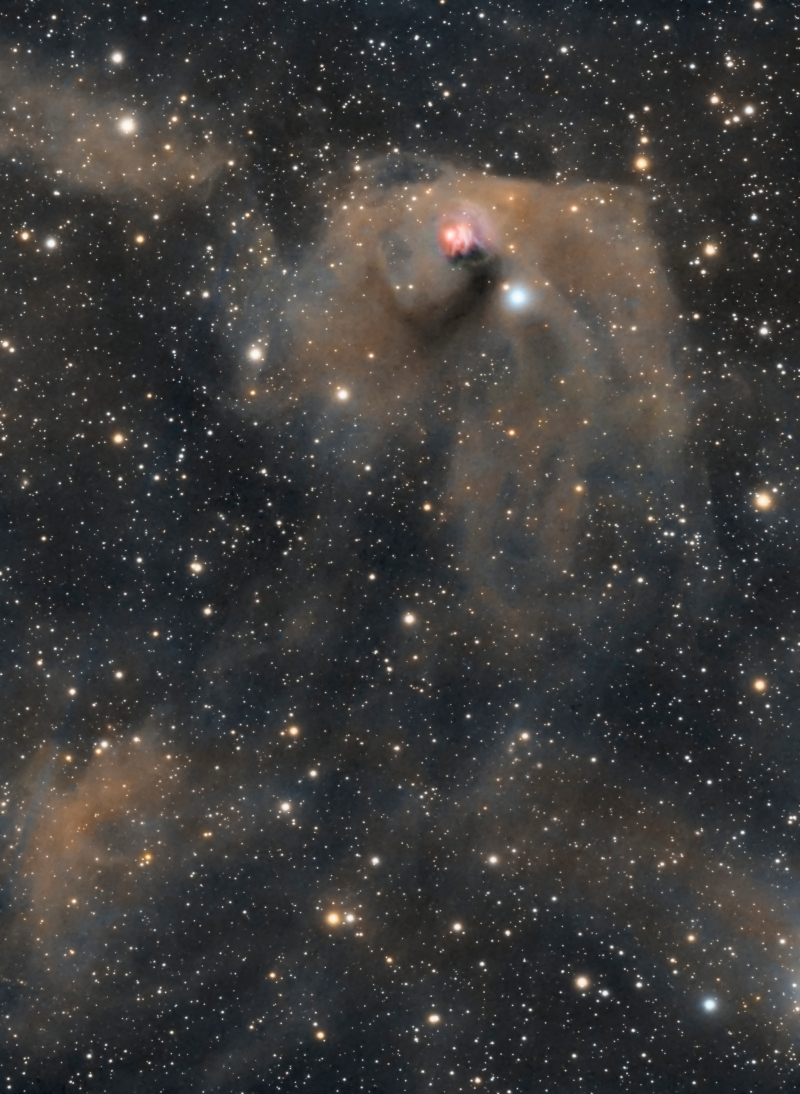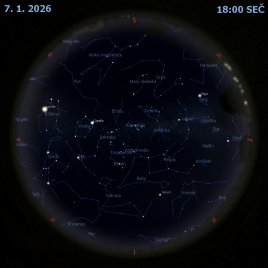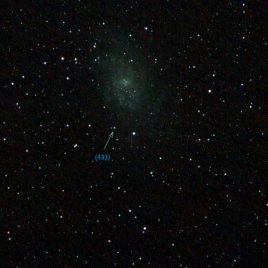T Tauri a Hindova proměnná mlhovina

Uznání a copyright: Dawn Lowry, Gian Lorenzo Ferretti, Ewa Pasiak and Terry Felty
Ta oranžová hvězda ve středu nahoře v zaprášeném teleskopickém poli T Tauri, prototyp třídy proměnných hvězd typu T Tauri. Vedle ní (vpravo) je žlutý kosmický oblak historicky známý jako Hindova proměnná mlhovina (NGC 1555). About 650 light-years away, Hvězda i mlhovina jsou na okraji místní bubliny a molekulárního mračna v Býku a jak u hvězdy, tak i u mlhoviny se pozorují výrazné změny jasnosti, ale ne nutně ve stejnou dobu, což přispívá k záhadnosti této zajímavé oblasti. Hvězdy typu T Tauri se nyní obecně považují za mladé (méně než pár milionů let), Slunci podobné hvězdy stále ještě v raných stupních vývoje. Aby se situace ještě více zkomplikovala, infračervená pozorování naznačují, že samotná hvězda T Tauri je součástí vícenásobného systému, a naznačují, že přidružená mlhovina Hind's Nebula může rovněž obsahovat velmi mladý hvězdný objekt. Další komplikací situace je, že infračervená pozorování naznačují, že samotná hvězda T Tauri je součástí vícenásobného systému a naznačují, že přidružená Hindova mlhovina může rovněž obsahovat velmi mladý hvězdný objekt. Dobře komponovaný snímek zabírá v odhadované vzdálenosti T-Tauri asi 8 světelných roků.
Seznam odkazů v popisu
- AstroBin.com: Dawn Lowry: NGC 1555 Hind's Variable Nebula
- AAVSO.org: T Tauri
- Harvard.edu: NGC 1555 Hind's Variable Nebula
- arXiv.org: Star formation near the Sun is driven by expansion of the Local Bubble
- SkyAndTelescope.org: 1,000-LIGHT-YEAR "BUBBLE" IS THE SOURCE OF ALL NEARBY BABY STARS
- NASA: Hubble Catches Jets, Bubbles, Bursts of Light in Taurus
- GSU.edu: Gravitational Collapse
- arXiv.org: A High Spatial Resolution Infrared View of the T Tauri Multiple System
- DavidDarling.info: Hind, John Russell (1823–1895)
NASA Official: Phillip Newman Specific rights apply. NASA Web Privacy Policy and Important Notices
A service of: ASD at NASA / GSFC & Michigan Tech. U.
Odkaz na originální APOD


